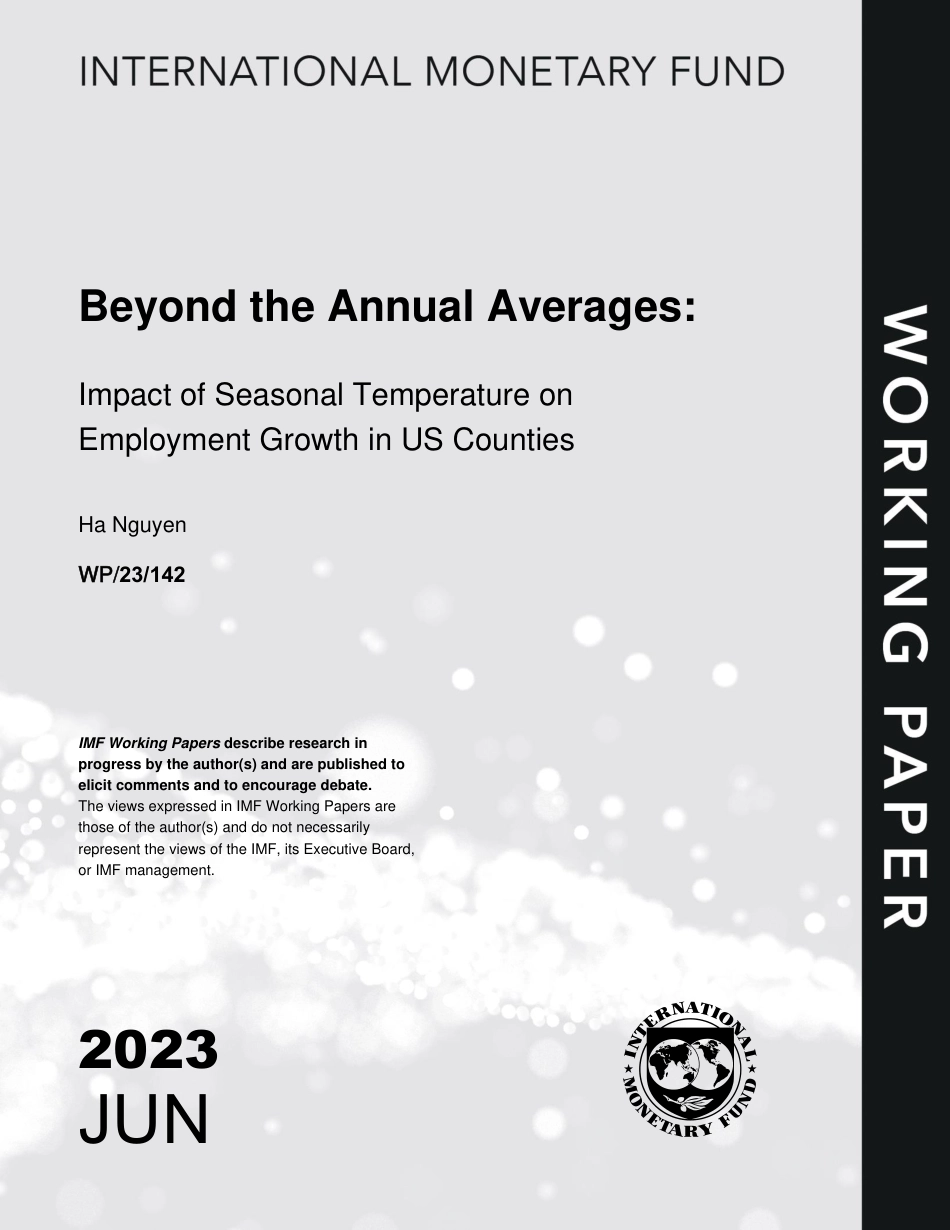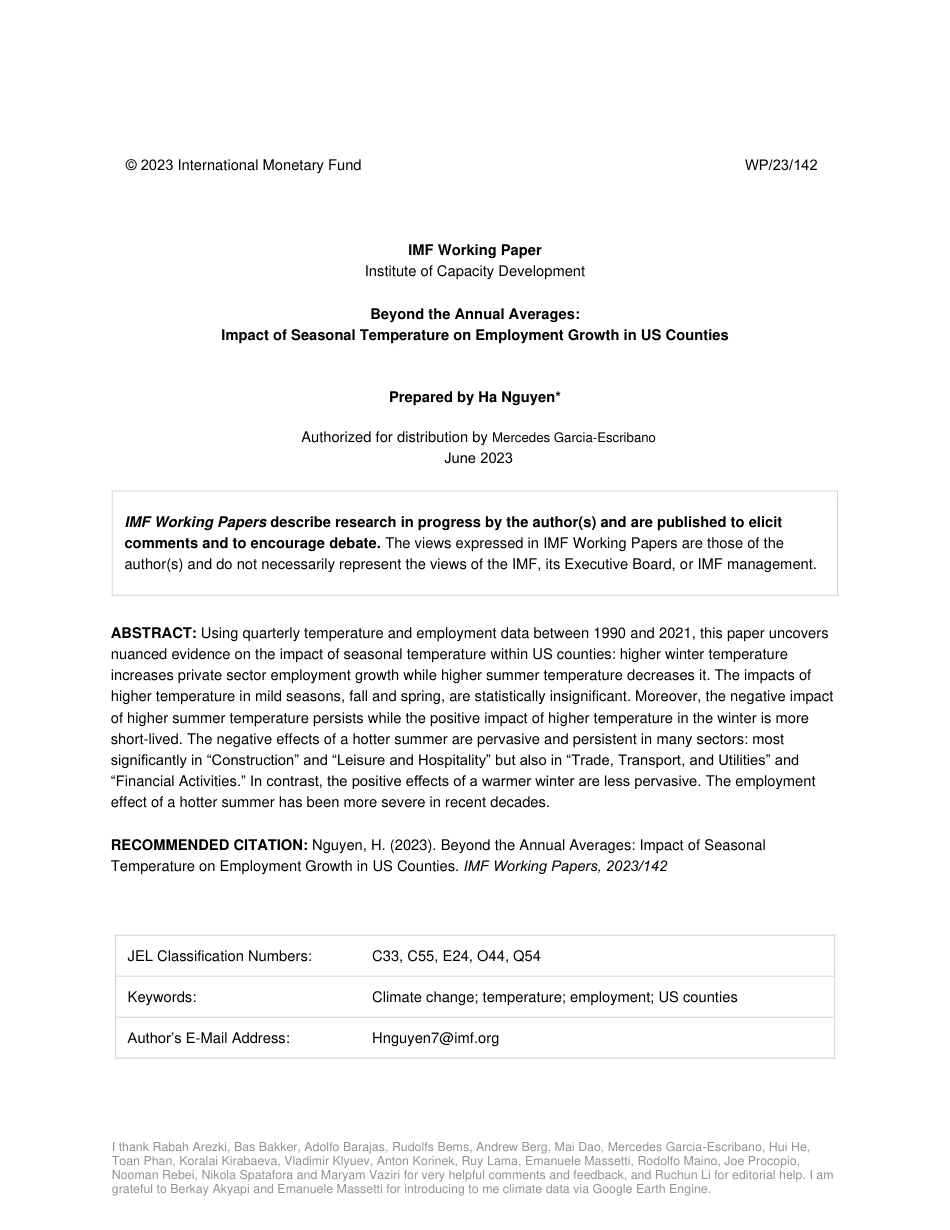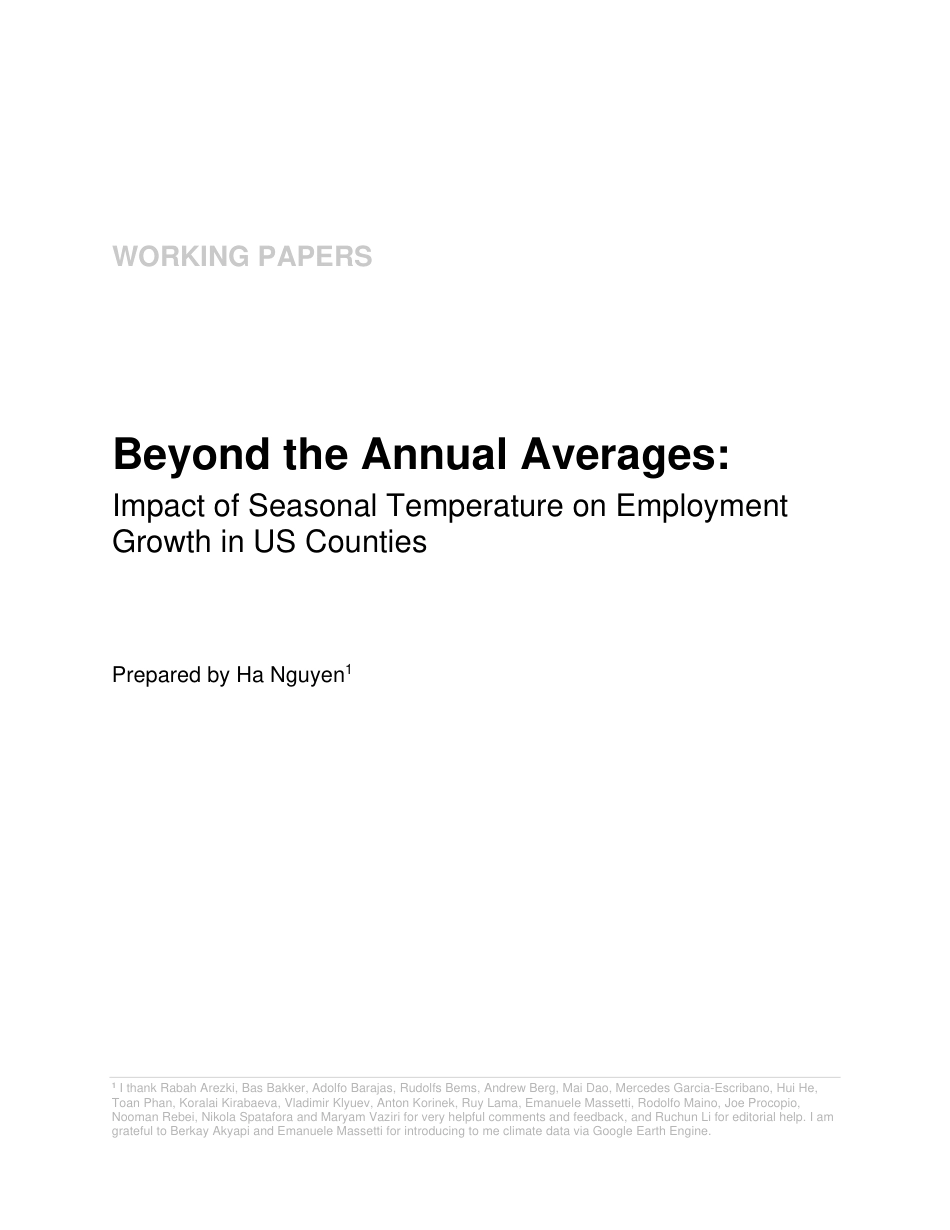IMF Working Papers describe research in progress by the author(s) and are published to elicit comments and to encourage debate. The views expressed in IMF Working Papers are those of the author(s) and do not necessarily represent the views of the IMF, its Executive Board, or IMF management. 2023JUN Beyond the Annual Averages: Impact of Seasonal Temperature on Employment Growth in US CountiesHa Nguyen WP/23/142I thank Rabah Arezki, Bas Bakker, Adolfo Barajas, Rudolfs Bems, Andrew Berg, Mai Dao, Mercedes Garcia-Escribano, Hui He, Toan Phan, Koralai Kirabaeva, Vladimir Klyuev, Anton Korinek, Ruy Lama, Emanuele Massetti, Rodolfo Maino, Joe Procopio, Nooman Rebei, Nikola Spatafora and Maryam Vaziri for very helpful comments and feedback, and Ruchun Li for editorial help. I am grateful to Berkay Akyapi and Emanuele Massetti for introducing to me climate data via Google Earth Engine. © 2023 International Monetary Fund WP/23/142IMF Working Paper Institute of Capacity Development Beyond the Annual Averages: Impact of Seasonal Temperature on Employment Growth in US Counties Prepared by Ha Nguyen* Authorized for distribution by Mercedes Garcia-Escribano June 2023IMF Working Papers describe research in progress by the author(s) and are published to elicit comments and to encourage debate. The views expressed in IMF Working Papers are those of the author(s) and do not necessarily represent the views of the IMF, its Executive Board, or IMF management. ABSTRACT: Using quarterly temperature and employment data between 1990 and 2021, this paper uncovers nuanced evidence on the impact of seasonal temperature within US counties: higher winter temperature increases private sector employment growth while higher summer temperature...



